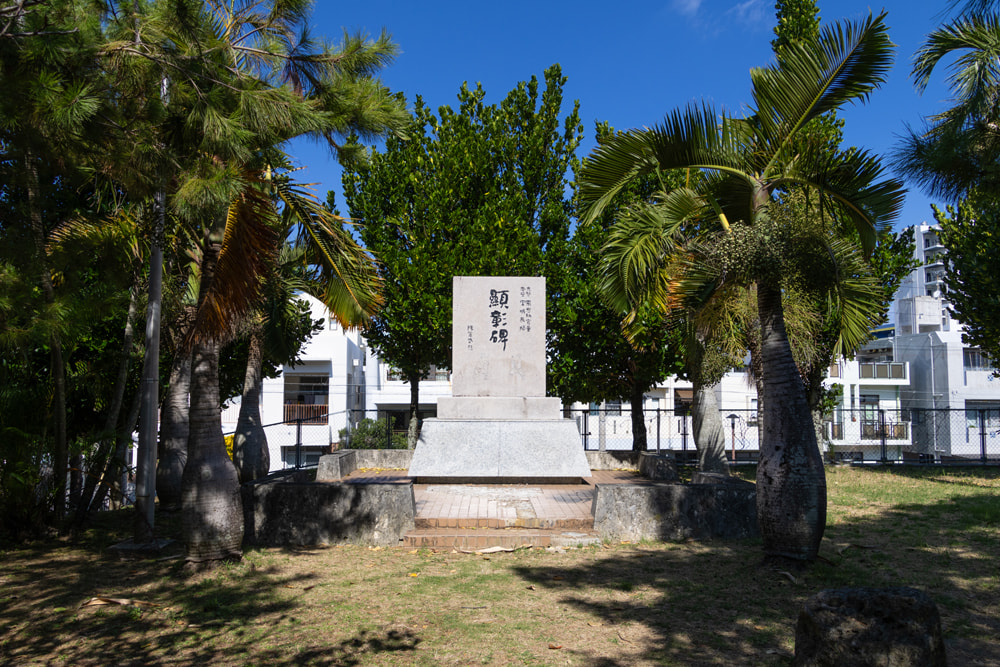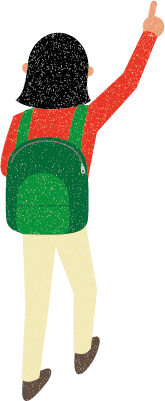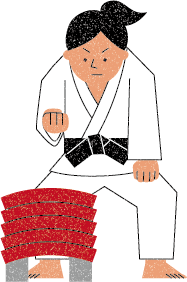Introducing the "Higaonna Kanryo and Miyagi Chojun Commemorative Monument" in Matsuyama, Naha City, a historical site of the Naha-te lineage |Okinawa Dento Karatedo Shinkokai
Naha city

After passing through the bypass that leads from Naha Airport to the city center, a pair of giant dragon shaped pillars appear, seemingly greeting the tourists. As they pass between these pillars, the road to the Kumoji intersection on National Route 58, which serves as the venue for the Naha Grand Tug of War, guides visitors through the lush greenery of Matsuyama Park.
The park, shaded by large banyan trees that symbolize Okinawa, is a place where families with small children and senior citizens can relax, as well as a site for local residents to enjoy activities like tennis and walking along the trails.
In one corner of the park, where such peaceful everyday life unfolds, stands a quiet monument honoring the great figures of Okinawa Karate, Higaonna Kanryo and Miyagi Chojun.
Okinawa Karate is a martial art that originated in Okinawa and is a form of empty-handed martial arts "Ti" that developed independently by incorporating various martial arts introduced through trade with China. It evolved in different regions, dividing into "Sui-di," "Tumai-di," and "Nafa-di," and eventually gave rise to the "Shorin-Ryu" (known as: 小林・少林・少林寺・松林), "Goju-Ryu," and "Uechi-Ryu."
Goju-Ryu, which has its roots in "Nafa-di" and was developed by Miyagi Chojun (1888-1953), who inherited techniques from his master Higaonna Kanryo (1853-1915), is recognized for being the first named style of Okinawa Karate, which has since spread throughout the world.
Miyagi Chojun's master, Higaonna Kanryo, combined the traditional Okinawan martial art of "Ti" with the Chinese martial arts techniques and knowledge he learned in Fujian, China, to create the foundation for the unique martial art of "Nafa-di," which formed the basis for the techniques and philosophy of modern Goju-Ryu.
Miyagi Chojun inherited this teaching and further developed it. Miyagi systematically organized the kata and training of Goju-Ryu, establishing it as a modern martial art. In particular, "Tensho" and "Sanchin" are recognized as the symbolic kata of Goju-Ryu.
The "Higaonna Kanryo and Miyagi Chojun Commemorative Monument" was erected in 1987 in Naha City's Matsuyama Park to commemorate the history of Goju-Ryu and its great pioneers. The monument bears the names of Higaonna and Miyagi, records their achievements, and has become a symbolic presence that conveys the spirit and historical significance of Goju-Ryu to karate practitioners around the world.
Visitors can learn about the history and significance of Goju-Ryu through this commemorative monument, and also deepen their understanding of the deep history and cultural background of Okinawa Karate as a whole. In this way, "Matsuyama Park" in Naha City has become an important place for conveying the story of the tradition and development of Goju-Ryu Karate.



